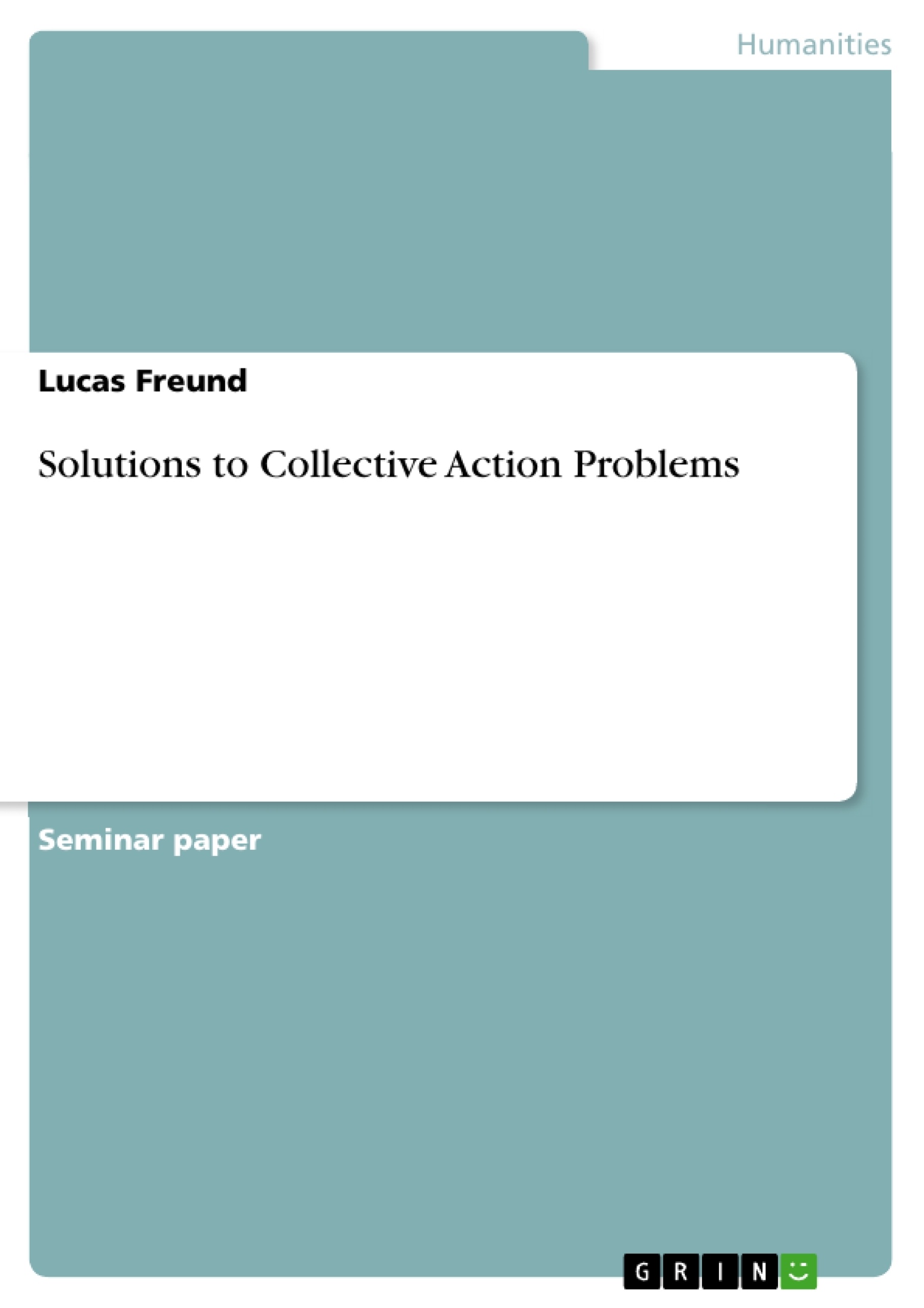Collective action problems describe a situation where aggregated individual rational behaviour creates decreased collective welfare. They can be described as “social dilemmas" according to Holzinger, 2003. Based on this definition, it is possible to identify a discrepancy in between what is regarded rational on an individual level and the collective common “good”. Therefore, in a collective action problem micro-level behaviour translates into undesirable macro-level effects, which manifest in decreased collective welfare.
Based on this first definition, this study focuses on two central aspects: 1. providing a possible explanation of how collective action problems derive from rational individual behaviour 2. providing possible solutions to collective problems. To put abstract theory into a reality oriented context, this study furthermore focuses in the discussion of the nature and problematics of collective action problems on Hardin's tragedy of the commons (ToC).
Table of Contents
- I. Introduction
- II. Collective Action Problems
- III. Game-theoretical Analysis: Collective Action Problems
- IV. Game-theoretical Analysis: The Tragedy of the Commons
- V. Conclusion: Solutions to a ToC.
Objectives and Key Themes
This study aims to provide an explanation of how collective action problems arise from individual rational behavior and to offer potential solutions. The primary focus is on the Tragedy of the Commons (ToC), a specific example of a collective action problem where shared resources are exploited by individuals for their benefit, leading to the depletion of those resources.
- Collective action problems and their derivation from individual behavior
- The Tragedy of the Commons as a specific example of a collective action problem
- Game-theoretical analysis of collective action problems
- Solutions to collective action problems, particularly the ToC
- The concept of a common-pool resource and its role in collective action problems
Chapter Summaries
- I. Introduction: This chapter defines collective action problems and their manifestation as social dilemmas. It highlights the discrepancy between individual rationality and collective welfare, emphasizing the detrimental macro-level effects of micro-level behavior. The chapter also introduces the concept of the Tragedy of the Commons (ToC) as a prominent example of a collective action problem.
- II. Collective Action Problems: This chapter explores the link between individual behavior and collective action problems by examining the example of driving behavior and its impact on climate change. It utilizes a simplified model to illustrate how individual choices, despite being individually rational, can lead to undesirable collective outcomes. The chapter also introduces the concept of interdependent individual behavior and its effects on collective systems.
- III. Game-theoretical Analysis: Collective Action Problems: This chapter applies game theory to analyze collective action problems, focusing on the Prisoner's Dilemma as a model for understanding strategic interactions. The chapter explains the concept of the Nash Equilibrium and its implications for collective outcomes, highlighting the potential for sub-optimal results due to the dominance of individual self-interest.
Keywords
The primary keywords and focus topics of this text include collective action problems, the Tragedy of the Commons, game theory, Prisoner's Dilemma, Nash Equilibrium, common-pool resources, individual rationality, collective welfare, and environmental sustainability. The study delves into the relationship between micro-level individual behavior and its macro-level consequences, particularly as they relate to the exploitation of shared resources.
- Quote paper
- Lucas Freund (Author), 2017, Solutions to Collective Action Problems, Munich, GRIN Verlag, https://www.grin.com/document/366438




